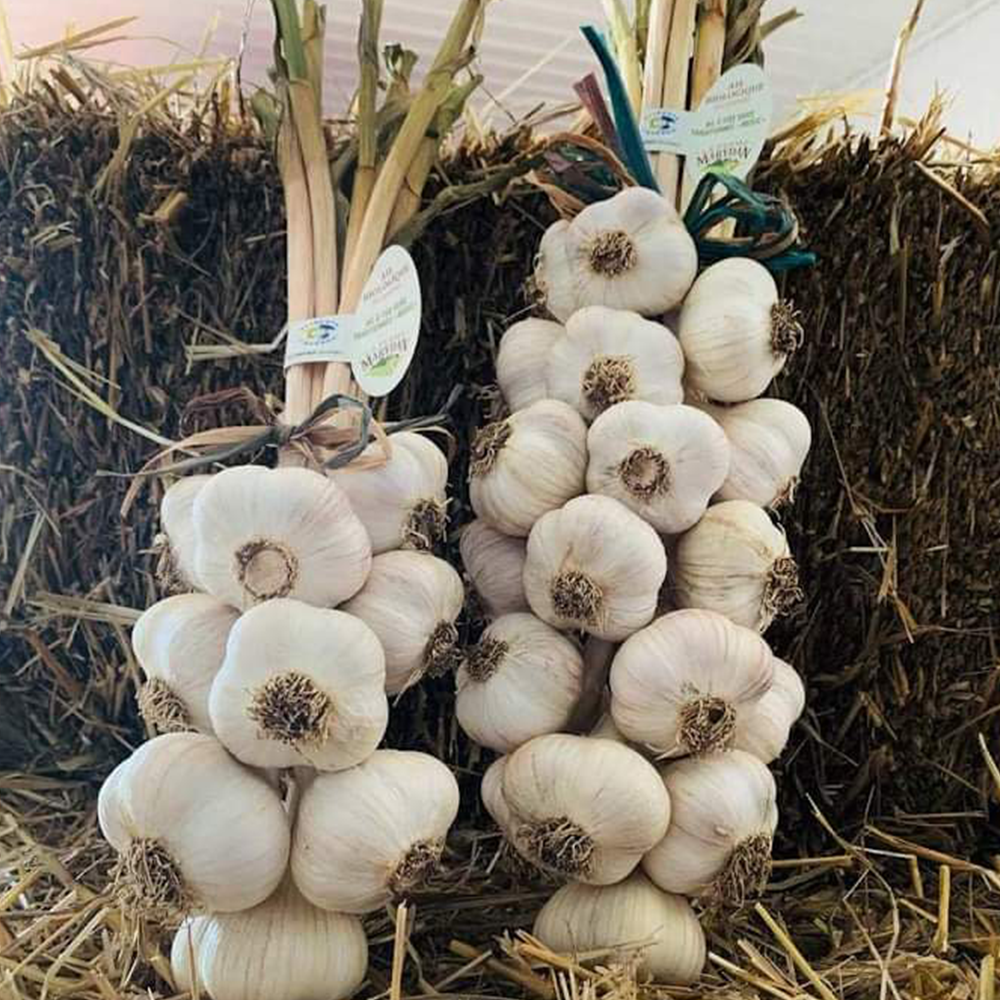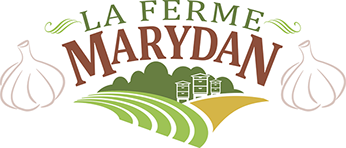
Organic Garlic

It was in the 1980’s that the Music hardneck garlic was imported from Italy to Canada by an Ontarian by the name of Mr. Al Musique. This one has a very high level of allicin, which explains its very pronounced taste. Moreover it becomes one of the most cultivated varieties in Quebec. It is known for its vigor, hardiness and resistance to disease.
Why did we choose this variety?
We have chosen to grow garlic music because it adapts well to our harsh climate, its high level of allicin, which multiplies the health benefits, its strong taste and especially for its longevity in conservation.
Benefits of garlic:
Garlic has antimicrobial, antiseptic, antibacterial, antibiotic, antifungal and antiviral properties. This makes it a food capable of driving out and eliminating a large number of bacteria, pathogenic when they manage to get into our body.
Consumed in small quantities, garlic provides few nutrients. On the other hand, consumed in larger quantities over the course of a day, garlic is a source of some nutrients. For example, one bulb of garlic (about 40 ml or 24 g of garlic) is a good source of manganese and vitamin B6, as well as a source of phosphorus (see our Phosphorus Nutrient Chart), iron, copper, selenium and vitamin C.
Garlic contains many active compounds, which provide various health benefits. Some of these compounds are thought to have multiple roles. This is the case, among others, of sulphur compounds, which are associated with both cancer and cardiovascular disease prevention. It is important to note that not all phytochemicals in garlic are active in the body and some have yet to be discovered. The active ingredients in fresh garlic work synergistically to produce different health effects.



– Sulfur compounds. These substances are so named because they contain one or more sulfur atoms in their chemical structure. Sulfur compounds are released when garlic is cut, crushed or ground. At this point, alliin (an inactive, odorless molecule in garlic) comes into contact with an enzyme and is transformed into allicin, which is the molecule responsible for garlic’s characteristic odor. Subsequently, allicin is transformed into other sulfur compounds such as diallyl sulfide, diallyl disulfide and ajoene. It is mainly these compounds that could prevent certain cancer cells from multiplying and thus protect the body against potential carcinogens. It should be noted that during the manufacturing of garlic tablets, the allicin would be destroyed, so that the consumption of garlic tablets would not allow the ingestion of the active compounds beneficial to health;
– Allicin has been proposed as the main active compound associated with the cardioprotective effect of garlic, including its ability to reduce atherosclerotic plaques in animals. However, when one considers that allicin is not absorbed into the bloodstream during garlic consumption, it is unlikely to contribute to the effect on cardiovascular health per se. Allicin is a transitional compound that is rapidly transformed into other sulfur compounds that are active in the body. Finally, ajoene would be a compound capable of preventing the synthesis (formation) of cholesterol in vitro and could thus play a role in the hypocholesterolemic effect attributed to garlic;
– Saponins are compounds present in garlic that have the ability to lower blood cholesterol in animals and blood clotting in vitro, two effects sought for the prevention of cardiovascular disease. Moreover, it has been demonstrated in animals that isolated garlic protein could have a hypolipidemic effect. These promising compounds could therefore be associated with the cardioprotective effect of garlic, but more studies are needed to better understand their roles.
